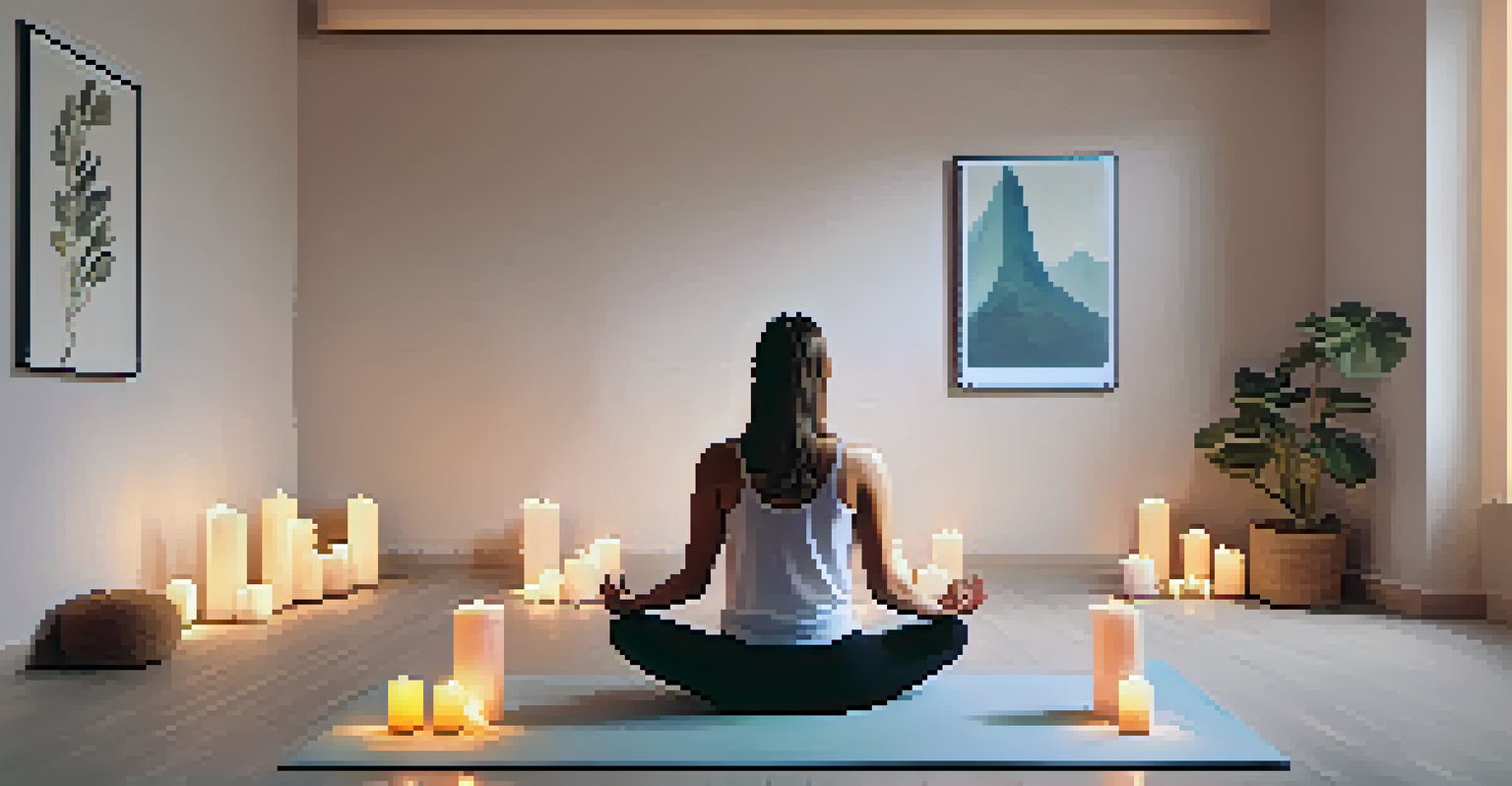Meditation Techniques for Resolving Personal Conflicts

Understanding Personal Conflicts and Their Impact
Personal conflicts can arise from misunderstandings, differing values, or emotional triggers. These conflicts not only affect relationships but can also take a toll on our mental well-being. Recognizing the roots of these conflicts is the first step toward resolution and personal growth.
The greatest weapon against stress is our ability to choose one thought over another.
When we engage in conflict without understanding its origins, it often leads to stress and anxiety. This creates a cycle of negative emotions that can be hard to break. By addressing these issues through meditation, we can cultivate a more peaceful mindset and open the door to resolution.
Moreover, conflicts can sometimes cloud our judgment, making it difficult to see the bigger picture. Meditation allows us to step back from the emotional chaos, providing clarity that can help us navigate through personal conflicts with a fresh perspective.
How Mindfulness Meditation Can Help
Mindfulness meditation focuses on being present in the moment, which can be incredibly beneficial in conflict resolution. By paying attention to our thoughts and feelings without judgment, we can better understand our emotional responses during conflicts. This awareness enables us to respond thoughtfully rather than react impulsively.

Practicing mindfulness helps us create a mental space where we can observe our feelings and thoughts as they arise. This observation can prevent us from getting overwhelmed by emotions, allowing us to approach conflicts more rationally. Over time, this practice can lead to a greater sense of emotional control.
Understanding Conflict Origins
Recognizing the roots of personal conflicts is crucial for resolution and personal growth.
Incorporating mindfulness into our daily routine helps us cultivate patience and empathy, which are crucial when resolving conflicts. By being mindful, we can listen more actively to others' perspectives, fostering a collaborative environment for resolution.
Loving-Kindness Meditation for Compassion
Loving-kindness meditation, also known as 'Metta' meditation, focuses on cultivating feelings of love and compassion towards oneself and others. This technique can be particularly powerful in resolving personal conflicts as it encourages us to wish well for those we might be in disagreement with. By fostering positive feelings, we can soften our hearts and make room for understanding.
Peace does not mean an absence of conflict, but the ability to cope with it.
During this meditation, we repeat phrases that express goodwill towards ourselves and others. For example, we might say, 'May I be happy, may you be happy.' This practice not only improves our own emotional state but also enhances our empathy towards others, making it easier to navigate conflicts.
As we practice loving-kindness meditation regularly, we may find it easier to approach conflicts with an open heart. This shift in mindset can transform how we engage with others, leading to more constructive and peaceful resolutions.
Visualization Techniques for Conflict Resolution
Visualization is a powerful technique where we create mental images to achieve specific outcomes. In the context of conflict resolution, we can visualize ourselves resolving a conflict peacefully. This technique not only prepares us mentally but can also alleviate anxiety associated with confrontations.
By imagining a successful resolution, we can reduce fear and increase our confidence when addressing the conflict. Visualization helps us rehearse our responses, making it easier to express ourselves calmly and clearly when the situation arises. It’s like practicing for a performance, where the more we rehearse, the more comfortable we become.
Mindfulness Enhances Conflict Resolution
Practicing mindfulness meditation helps us respond thoughtfully instead of reacting impulsively during conflicts.
Additionally, visualization can help anchor our intentions. By picturing positive interactions, we align ourselves with peaceful outcomes, which can guide our behavior and responses in real-life situations.
Breathwork Techniques to Calm the Mind
Breathwork involves various breathing techniques designed to promote relaxation and mental clarity. When faced with personal conflicts, our breath often becomes shallow and rapid, which can heighten stress levels. By focusing on our breath, we can calm our nervous system and create a more balanced emotional state.
Simple techniques like deep breathing or the 4-7-8 method can be particularly effective. Inhale deeply for four counts, hold for seven, and exhale slowly for eight. This practice not only calms our mind but also allows us to approach conflicts with a clearer head.
Incorporating breathwork into our meditation routine can enhance our overall practice. It provides a tool to ground ourselves in moments of tension, allowing us to engage in conflicts with a sense of peace and composure.
Journaling as a Complement to Meditation
Journaling can serve as an excellent complement to meditation, particularly when resolving personal conflicts. Writing down our thoughts and feelings can provide clarity and insight into the underlying issues that contribute to conflicts. This practice helps us articulate our feelings, making them easier to address during meditation.
By regularly journaling, we can track our emotional responses over time, identify patterns, and recognize triggers. This self-awareness can enhance our meditation practice, helping us focus on specific areas that need healing or resolution.
Combining Techniques for Success
Integrating various meditation practices can enhance their effectiveness and lead to more harmonious relationships.
Moreover, journaling allows us to express emotions that might be difficult to voice. By putting our thoughts on paper, we create a safe space to process feelings, which can lead to greater emotional release and peace.
Combining Techniques for Greater Impact
While each meditation technique offers unique benefits, combining them can enhance their effectiveness. For instance, starting with breathwork to calm the mind, followed by mindfulness meditation, can create a strong foundation for addressing personal conflicts. This layered approach allows us to tackle conflicts from different angles.
Additionally, integrating loving-kindness meditation into our routine can cultivate a compassionate mindset, making it easier to resolve conflicts with empathy. Visualizing successful outcomes can further reinforce our commitment to peaceful resolutions.

By being open to experimenting with different combinations of techniques, we can find what resonates best with us. This personalized approach ensures that we are well-equipped to handle conflicts as they arise, leading to more harmonious relationships.
Creating a Consistent Meditation Practice
Establishing a consistent meditation practice is key to reaping the benefits of these techniques. Just as we wouldn’t expect to build physical strength overnight, meditation requires regular practice to create lasting change in our emotional responses. Setting aside time each day for meditation can help us stay grounded and prepared for conflicts.
Starting with just 5 to 10 minutes a day can make a significant difference. As we become more comfortable, we can gradually increase the duration and explore various techniques. Consistency is what transforms meditation from a casual practice to an integral part of our conflict-resolution toolkit.
Moreover, it can be helpful to create a dedicated space for meditation, free from distractions. This physical reminder encourages us to prioritize our practice, making it a natural part of our daily routine and leading to a more peaceful mindset.